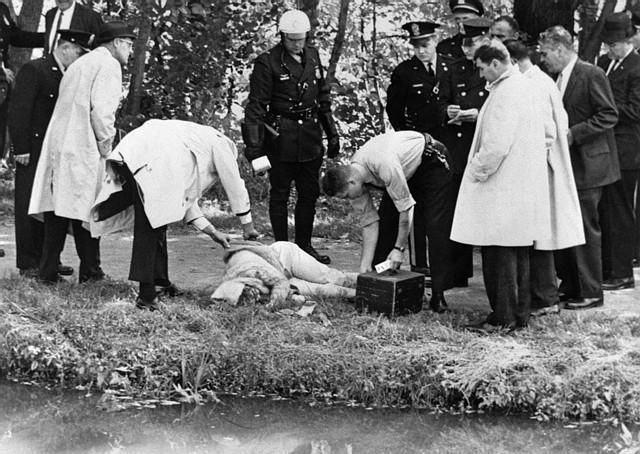Over the years I’ve written a number of posts about the Crime Wave of the Late 20th Century, its causes, political repercussions and the long shadow it still casts over our society. What drove the rise of crime starting in the mid-1960s and its precipitous fall from the early-mid-1990s is no mere matter of historical interest. Today we talk a lot about mass incarceration, the militarization of policing and various other excesses of policing and corrections. But our ability to do so, to have any political shot at change is heavily, heavily tied to the drop of crime over the last 25 years. If crime shoots back up again, we’re back to the political environment of the 70s and 80s that created mass incarceration and all the rest. But we can’t have any confidence that it won’t shoot up again if we don’t have a clear idea why it dropped in the first place or, for that matter, why it started spiking thirty years earlier.
In the last few years I’ve been increasingly convinced that environmental lead poisoning played at least a significant role in the story. Now there’s new evidence strengthening the ‘lead as driver of crime’ thesis.
The basic argument to the lead thesis is that environmental lead poisoning takes 16 or 20 years to show up in crime statistics because that’s the time it takes for mainly men to reach their peak years of criminal activity. For the Crime Wave of the Late 20th Century the main contaminant seems to be leaded gasoline. Regulations began de-leading gas in the early 70s and crime rates started to fall in the early 90s (though there wasn’t much recognition that it was more than a blip until the mid- or late-90s.)
One side point, there’s no scientific debate over the nature of lead poisoning itself. A voluminous literature shows conclusively that lead poisoning leads to aggression and loss of impulse control – the two key building blocks of murder. The question is whether pervasive, low-level lead poisoning can be a key driver in vast social phenomena like crime rates.
But what about before the late 20th century?
Two scholars, one economist (James J. Feigenbaum) and one sociologist (Christopher Muller), have just published a study that looks at a different era of lead poisoning, the early 20th century. Indeed, it’s one that is quite timely to the news today since it is tied to lead in water.
In the late 19th century, in an era of municipal improvement, thousands of American cities built modern municipal water systems. More than 1000 new systems were built just between 1890 and 1896. There is no question that drove huge gains in public health because of clean water and infectious diseases. But there were also costs. Ironically, lead was thought to be the better metal to use, because of its pliability and durability. Some cities chose lead pipes and others chose iron pipes. Much of the study, which you can read here, is quite technical. It focuses on the very real challenge of developing reliable crime statistics in the era before the federal government did so systematically, accounting for different historical backgrounds which might make one city more high crime than another and ruling out or control for other sources of lead poisoning besides municipal water supplies. They look at crime rates from 1921 to 1936.
I don’t have the space or the expertise to summarize those arguments. But my somewhat knowledgable layman’s take is that they seem to have addressed the key issues in a pretty careful and comprehensive way. I’m curious to hear what other statisticians and sociologists think.
In any case, from an evidentiary standpoint there are two really valuable things about looking at lead in water. One is that you have two sets of water systems – lead (highly toxic) and iron (basically not-toxic). That’s a very clear cut comparison, especially when you figure in water acidy, which as we’ve learned in Flint, Michigan is hugely important in terms of how much lead leaches into drinking water from lead pipes. Second, in a municipal water system, basically everyone drinks the same water – pretty much irrespective or class, race, wealth or any other factors. That’s much simpler than the situation in the late 20th century where environmental lead poisoning was disproportionately focused on poor and non-white populations crowded into central cities.
So what was the result of all this historical and statistical work? Quite striking actually. According to the study, “cities that used lead pipes had between 14 and 36 percent higher homicide rates than cities that did not.” That is a huge jump from what seems to be a single factor.
These results are relevant both for early 20th century crime and those later in the century, even though they do not directly address the latter. Put simply, this new study allows a comparison which is much more clear cut. And it seems to show pretty clearly that environmental lead poisoning can drive higher murder rates.
That is a very big deal, both for understanding our past and planning our future.






